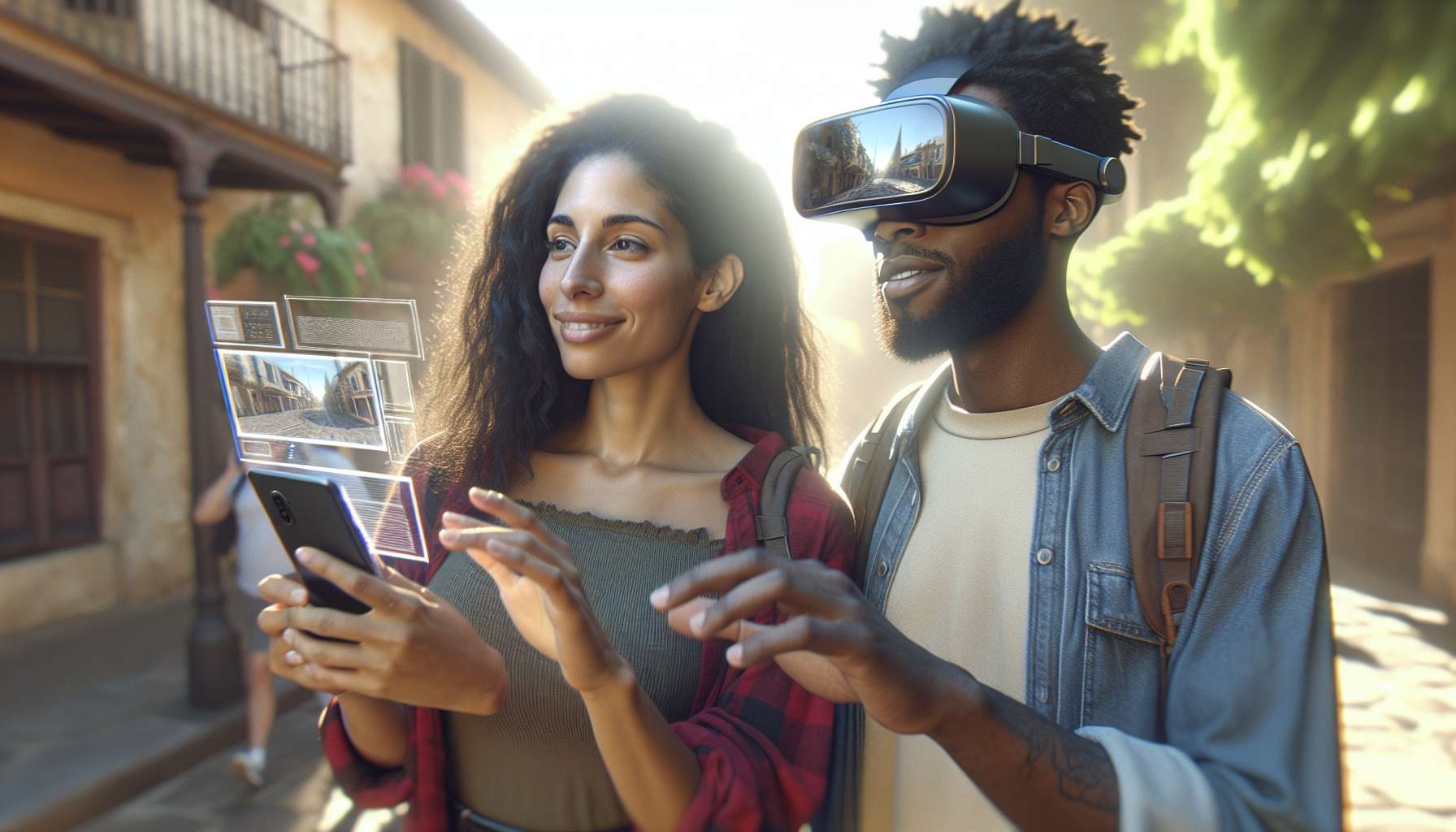Unlocking the Potential of Augmented Reality in Post-Pandemic Tourism
The global tourism industry has been severely impacted by the COVID-19 pandemic, with travel restrictions, lockdowns, and safety concerns bringing the sector to a standstill. As the world gradually recovers and travel resumes, businesses in the tourism industry are seeking innovative solutions to revitalize their operations and provide unique experiences to travelers. Augmented Reality (AR) emerges as a powerful tool that can transform the way we explore and engage with destinations, attractions, and cultural sites in the post-pandemic era.
Enhancing Safety and Confidence
One of the primary concerns for travelers in the aftermath of the pandemic is safety. Augmented Reality can play a crucial role in addressing these concerns by minimizing physical contact and providing virtual experiences. With AR, tourists can access information, maps, and audio guides through their smartphones or AR glasses, eliminating the need for shared touchscreens or physical brochures. This not only reduces the risk of transmission but also enhances the overall visitor experience by providing personalized and interactive content.
Virtual Tours and Immersive Experiences
AR technology enables travelers to embark on virtual tours and immersive experiences, bringing destinations to life even before they set foot on the actual location. Museums, historical sites, and landmarks can leverage AR to recreate historical events, showcase artifacts, and provide interactive storytelling. Imagine walking through the ruins of an ancient civilization and witnessing its grandeur through holographic projections or exploring a museum and having famous artworks come to life right before your eyes. These virtual experiences not only engage and educate tourists but also create a sense of anticipation and excitement for their upcoming visit.
Navigation and Wayfinding
Getting lost in an unfamiliar city or struggling to find your way around a crowded tourist attraction can be frustrating. AR-powered navigation and wayfinding solutions can alleviate these challenges by overlaying digital directions and markers onto the real-world environment. Tourists can simply follow the AR-guided path on their devices, ensuring a seamless and stress-free exploration. Additionally, AR can provide real-time information about nearby points of interest, restaurants, and amenities, enhancing convenience and enabling travelers to make informed decisions on the go.
Language Translation and Cultural Immersion
Language barriers often hinder travelers from fully immersing themselves in local cultures and engaging with the local community. AR technology can bridge this gap by offering real-time language translation through visual overlays or audio guides. Tourists can use their devices to instantly translate signs, menus, and conversations, enabling meaningful interactions and fostering cultural understanding. This not only enhances the travel experience but also promotes inclusivity and encourages travelers to explore off-the-beaten-path destinations.
Personalized Recommendations and Offers
AR-powered applications can collect data on travelers’ preferences, interests, and behaviors to provide personalized recommendations and offers. By analyzing past travel patterns and user feedback, these applications can suggest tailored itineraries, attractions, and activities that align with individual preferences. Moreover, businesses in the tourism industry can leverage AR to deliver targeted promotions, discounts, and loyalty rewards, fostering customer loyalty and driving repeat visits.
The Future of Post-Pandemic Tourism
As the world adapts to the new normal, augmented reality holds immense potential in revitalizing the tourism industry. By leveraging AR technology, businesses can enhance safety measures, provide immersive experiences, improve navigation, bridge language barriers, and offer personalized recommendations. The integration of AR into the tourism sector not only addresses the challenges posed by the pandemic but also opens up new opportunities for growth, innovation, and sustainable tourism practices.
As travelers seek unique and memorable experiences, businesses that embrace augmented reality will stand out from the competition and attract a new generation of tech-savvy tourists. The future of post-pandemic tourism lies in the seamless integration of AR, transforming the way we explore, learn, and connect with the world around us.





